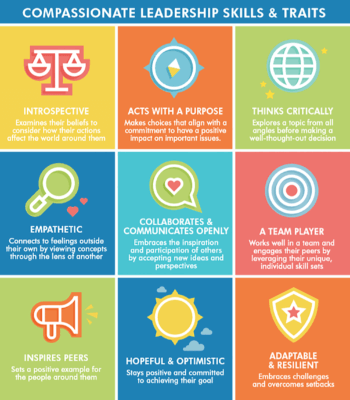What are Compassionate Traits?
Every day, each of us has the opportunity to make decisions that have an impact on other people, other animals, and the planet we share. As you and your family work on your Roots & Shoots project, you’ll develop and practice Roots & Shoots Compassionate Traits, which are the characteristics chosen by youth leaders to represent essential skills and behaviors of individuals who are compassionate decision-makers. Let’s get to know the Compassionate Traits!
